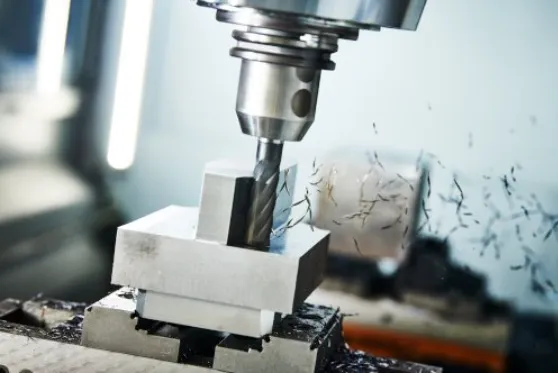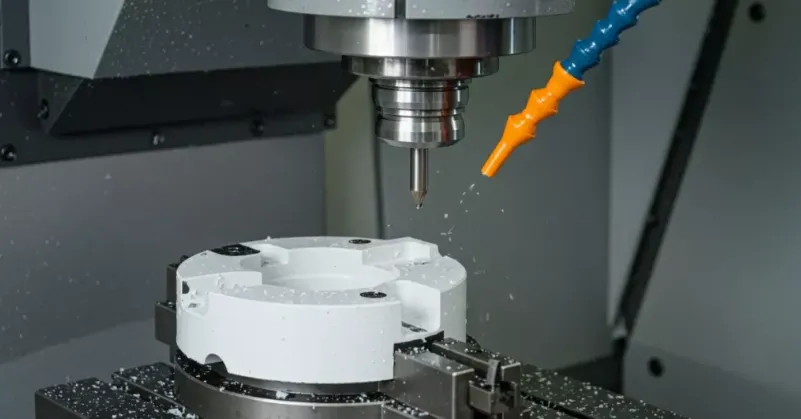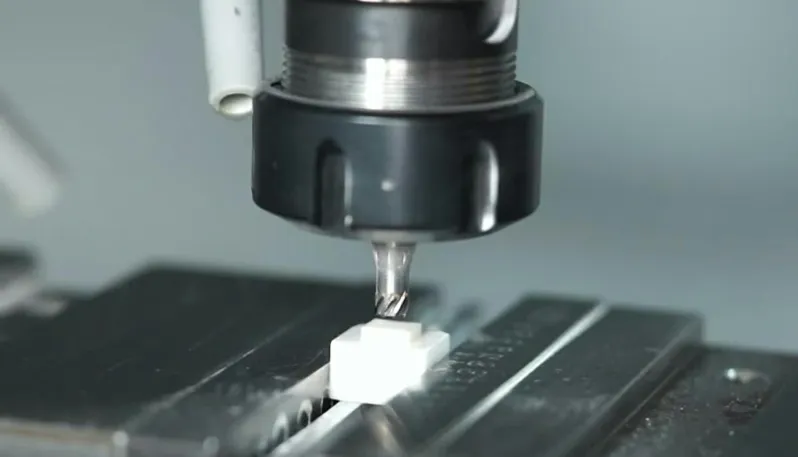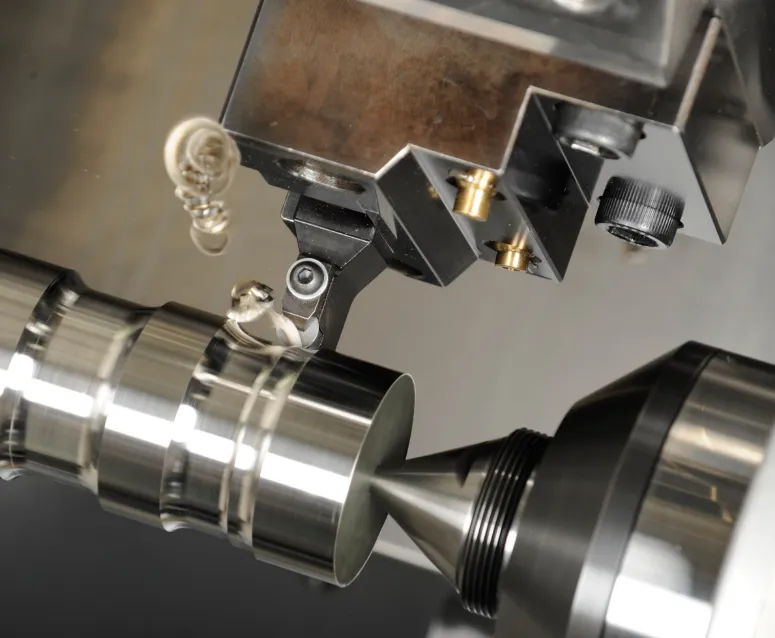Ceramic CNC machining represents one of the most technically demanding yet critically important manufacturing processes for high-performance industrial components. Unlike conventional metal machining, ceramic processing requires specialized tooling, unique cutting strategies, and meticulous environmental controls to overcome the material’s extreme hardness and brittle fracture characteristics. Advanced technical ceramics including alumina (Al2O3), zirconia (ZrO2), silicon carbide (SiC), and silicon nitride (Si3N4) present particular machining challenges due to their Vickers hardness values ranging from 1,200 to 3,000 HV – often exceeding that of hardened tool steels. The machining process must carefully balance material removal rates with subsurface damage prevention, as microscopic cracks introduced during cutting can significantly degrade the mechanical properties and service life of finished components. Modern ceramic CNC machining has evolved to address these challenges through diamond tooling, ultrasonic-assisted processes, and advanced cooling techniques that enable the production of complex geometries with tolerances within ±5 microns for critical applications.
 The machine tool requirements for ceramic machining differ fundamentally from those used for metals. Heavy-duty CNC machining centers designed for ceramics feature exceptionally rigid constructions with vibration-damped bases and high-precision linear guides capable of maintaining positioning accuracy under the extreme cutting forces generated. Spindle technologies have advanced to incorporate high-torque, direct-drive systems operating at 10,000-30,000 RPM with runout less than 1 micron – essential for preventing tool fracture when working with polycrystalline diamond (PCD) cutters. The machines incorporate sophisticated coolant delivery systems that precisely control fluid dynamics at the cutting interface, often utilizing high-pressure jets (up to 200 bar) to effectively remove microscopic ceramic particles and prevent tool loading. Specialized CNC controls with adaptive feed rate capabilities automatically adjust cutting parameters based on real-time spindle load monitoring, protecting both the workpiece and cutting tools from sudden failures. Environmental controls maintain consistent temperature (±0.5°C) and humidity levels in the machining area to prevent thermal expansion effects that could compromise dimensional accuracy in precision ceramic components.
The machine tool requirements for ceramic machining differ fundamentally from those used for metals. Heavy-duty CNC machining centers designed for ceramics feature exceptionally rigid constructions with vibration-damped bases and high-precision linear guides capable of maintaining positioning accuracy under the extreme cutting forces generated. Spindle technologies have advanced to incorporate high-torque, direct-drive systems operating at 10,000-30,000 RPM with runout less than 1 micron – essential for preventing tool fracture when working with polycrystalline diamond (PCD) cutters. The machines incorporate sophisticated coolant delivery systems that precisely control fluid dynamics at the cutting interface, often utilizing high-pressure jets (up to 200 bar) to effectively remove microscopic ceramic particles and prevent tool loading. Specialized CNC controls with adaptive feed rate capabilities automatically adjust cutting parameters based on real-time spindle load monitoring, protecting both the workpiece and cutting tools from sudden failures. Environmental controls maintain consistent temperature (±0.5°C) and humidity levels in the machining area to prevent thermal expansion effects that could compromise dimensional accuracy in precision ceramic components.
Cutting tool technology represents perhaps the most critical factor in successful ceramic CNC machining. Industrial-grade diamond tools dominate the field, with three primary configurations employed based on application requirements: monolithic polycrystalline diamond (PCD) tools for general machining, chemical vapor deposition (CVD) diamond-coated tools for finishing operations, and single-crystal diamond tools for optical-quality surface generation. Tool geometries are specifically engineered for ceramic machining – featuring acute positive rake angles (15-25°) to promote shearing rather than fracturing, and specially designed chipbreakers to manage the fine ceramic particulates generated during cutting. Edge preparation of diamond tools requires laser machining or electrical discharge machining (EDM) to achieve the necessary sharpness without microchipping. Tool wear monitoring systems utilizing laser measurement or vision systems track edge degradation, as even microscopic diamond tool wear can dramatically affect surface quality in ceramics. The development of hybrid ultrasonic-assisted machining tools has further advanced the field, combining high-frequency (20-40 kHz) vibrations with conventional cutting motions to reduce machining forces by up to 60% in advanced ceramics.
Process parameters in ceramic CNC machining require careful optimization to balance productivity with quality. Typical cutting speeds range from 200-800 m/min for alumina ceramics down to 50-200 m/min for harder silicon carbide compositions, significantly slower than metal machining rates. Depth of cut is generally limited to 0.05-0.5 mm depending on ceramic grade, with finer cuts required for high-purity, fully dense technical ceramics. Feed rates are precisely controlled between 0.005-0.05 mm/tooth to prevent edge chipping while maintaining reasonable cycle times. Coolant selection is critical – with water-based synthetic coolants predominating, though oil-based coolants are sometimes employed for certain ceramic composites. The machining environment often incorporates specialized filtration systems to remove submicron ceramic particles from both coolant and air streams, maintaining process stability and protecting machine components from abrasive wear. Advanced process monitoring systems track acoustic emissions, spindle power consumption, and vibration signatures to detect the onset of subsurface damage or tool failure in real-time.
Industrial applications of precision-machined ceramics span multiple high-tech sectors where conventional materials cannot meet performance requirements. In semiconductor manufacturing, alumina and aluminum nitride components machined to micron-level tolerances serve as critical wafer handling components in extreme vacuum environments. The medical implant industry relies on CNC-machined zirconia for dental abutments and orthopedic components, where biocompatibility and wear resistance are paramount. Aerospace applications utilize silicon carbide and silicon nitride ceramic components in turbine engines, requiring complex cooling channel geometries that can only be produced through advanced CNC machining. The electronics industry depends on precision-machined ceramic substrates and packages for high-power RF devices and LED modules, where thermal management properties are essential. Even emerging technologies like quantum computing and fusion energy research utilize ultra-precision machined ceramic components for specialized instrumentation and containment systems. These applications demonstrate how ceramic CNC machining enables technological advances across multiple disciplines by overcoming the material’s inherent processing challenges.
Quality assurance in ceramic machining employs specialized metrology techniques to verify both dimensional accuracy and structural integrity. Non-contact measurement methods including white light interferometry and laser scanning provide surface topography data without risking damage to fragile ceramic features. X-ray computed tomography (CT) scanning has emerged as a powerful tool for detecting subsurface machining damage in critical components. Advanced fracture testing methods including biaxial flexure tests and micro-indentation analysis evaluate the depth of machining-affected zones that could compromise component performance. Surface finish measurement typically achieves 0.1-0.4 μm Ra values for precision ceramic components, with some optical applications requiring even finer finishes below 50 nm Ra. The combination of these quality control methods ensures that machined ceramic components meet the stringent requirements of their intended applications while providing feedback for continuous process improvement.
Emerging technologies continue to push the boundaries of ceramic CNC machining capabilities. Hybrid processes combining additive manufacturing with precision machining are enabling new geometries in ceramic components that were previously unmanufacturable. Machine learning algorithms are being applied to optimize toolpaths and predict tool life in ceramic machining operations. The development of new ceramic-specific CAM software allows for more accurate simulation of machining processes before cutting begins. Laser-assisted machining techniques show promise for reducing cutting forces in particularly hard ceramic formulations. These innovations collectively work to make ceramic CNC machining more accessible while expanding the range of applications that can benefit from advanced ceramic material properties. The field continues to evolve as new ceramic composites are developed and manufacturing technologies advance to meet the growing demand for high-performance ceramic components across industries.








